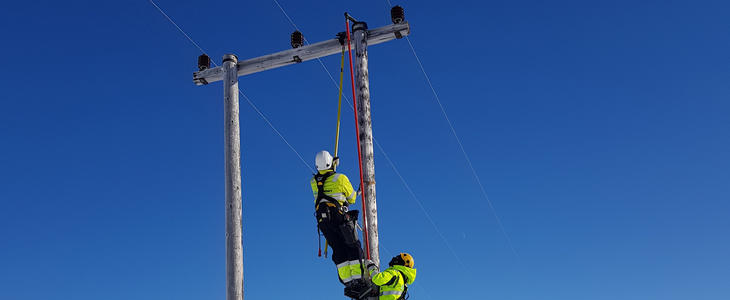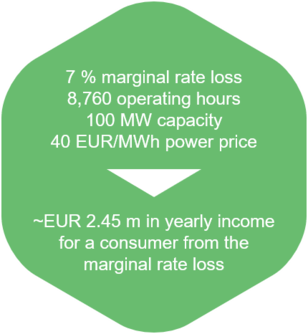Favourable grid situation

In Northern Norway the grid fees can be negative, i.e. an income for a consumer.
In Northern Norway the grid fees can be negative, which means that a large-scale consumer will receive an income.
The main reason for this is due to the oversupply of renewable energy. In 2018, the county of Nordland – one of the three counties in Northern Norway, had alone a production surplus of ~7.4 TWh.
This oversupply puts pressure on the grid and a consumer will be beneficial to balance the grid, which is why the consumer will get paid instead of paying grid fees. This is regulated through the marginal rate loss (see description below).
Nordkraft’s sites had on average a marginal rate loss of about 5-8% (2015 – 2019). The calculation below shows the yearly effect this would have on a DC.

Marginal rate loss – brief description
The main reason for negative grid fees is the fact that Northern Norway has Norway’s highest marginal rate losses. The marginal rate loss reflects the system load each producer or consumer inflicts on the grid when producing or drawing power from the grid. As Northern Norway has a large production surplus, it is beneficial with additional consumption to get a better balance between supply and demand. This is regulated by the grid companies through the use of a marginal rate loss at each connection point. A positive marginal rate loss means that a consumer will receive a payment from the grid company instead of experiencing a cost. And the higher the marginal rate loss, the higher the grid income will be.